Holographic Technology in Science and Industry
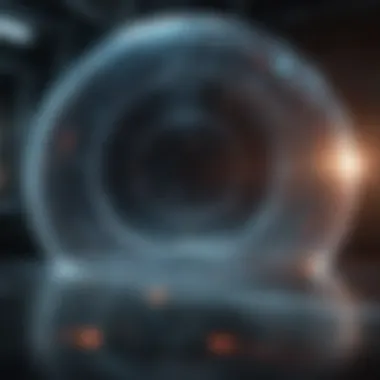
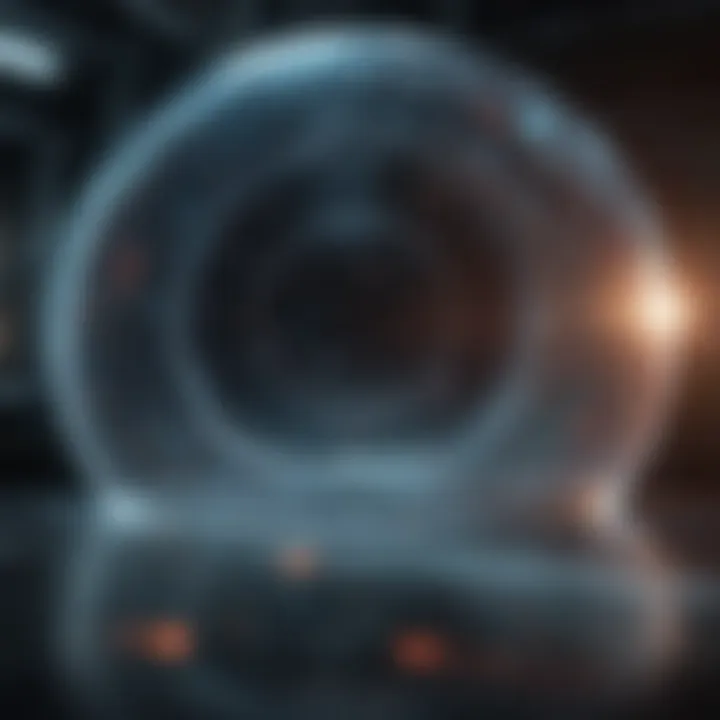
Intro
In an age where technology is rapidly reshaping our understanding of the universe, holo applications emerge as a captivating domain that intertwines science with industry. These applications, derived from holographic technology, have a profound impact on numerous fields, extending far beyond the simple use of 3D visuals. By employing techniques that manipulate light to create images that appear to float in space, scientists and engineers are unlocking new potentials in research, education, and commercial enterprises.
To grasp the significance of holo applications, it’s essential to delve into the foundational principles that govern this technology. Holography isn’t just about pretty pictures; it incorporates intricate concepts of light behavior and interference. Central to this technology is the laser, which provides a coherent light source necessary for creating high-quality holograms. As developments burgeon, these applications are increasingly integrated into modern laboratories and corporate environments, offering solutions that are not only innovative but also transformative.
Research Overview
Methodological Approaches
The methodology surrounding holo applications typically integrates both theoretical exploration and hands-on experimentation. Researchers adopt rigorous techniques for developing holographic models, such as computational simulations to predict how light interacts with different materials. For instance, through wavefront reconstruction methods, scientists can visualize complex structures at a micro and nano-scale, unlocking insights into previously inaccessible realms of material science.
This multifaceted approach includes both qualitative and quantitative analyses, thereby enriching the research spectrum. Collaborative efforts often merge physics with engineering, as application in fields like materials science, medical imaging, and data storage frequently relies on interdisciplinary expertise. This kind of collaboration underpins the advancement of holography, propelling its evolution in both academic and industrial settings.
Significance and Implications
The implications of holo applications are far-reaching. Not only do they enhance visualization techniques, but they also facilitate better understanding in areas like biological research, where 3D imaging allows for improved cellular observations, aiding in drug discovery and development. Furthermore, in industries such as aerospace, holography contributes to quality control through real-time inspections of engineering models.
In essence, the ability of holographic technology to provide detailed information through three-dimensional imagery has changed the paradigm of observation and analysis. As this technology continues to advance, its significance spans across educational reform, where interactive learning can enhance student engagement and comprehension, to comprehensive change in industrial protocols, leading to heightened efficiency and accuracy.
"Holographic applications are not just a tech gimmick; they are paving the way for sophisticated solutions that solve complex problems."
Current Trends in Science
Innovative Techniques and Tools
Currently, several innovative techniques are at the forefront of holographic research. For example, digital holography, which utilizes digital sensors to capture holographic images, is transforming how we perceive and interact with holograms. This method allows for real-time manipulation and analysis, thus accelerating the prototyping cycle in design and manufacturing processes. Moreover, the synergy between artificial intelligence and holography is paving the way for smarter systems in datacenter management, enhancing efficiency and minimizing errors.
Additionally, tools from the realm of virtual reality and augmented reality are converging with holography. By using devices like Microsoft HoloLens, professionals can overlay holographic data onto the real world, creating immersive environments that are especially beneficial in training and simulation scenarios.
Interdisciplinary Connections
Holography is not confined to a single discipline; rather, it thrives on interdisciplinary connections. The blend of physics, chemistry, and computer science gives rise to applications that address complex challenges. Educational institutions increasingly incorporate holographic systems into their curriculum, fostering an environment where students from diverse scientific backgrounds can collaborate and innovate.
Prelims to Holo Applications
Holo applications represent a fascinating frontier in both science and industry, merging complex technology with practical utility. These applications extend beyond mere visual effects; they forge new pathways in understanding, interaction, and functionality across multiple disciplines. By integrating holography into existing frameworks, professionals can achieve significant advancements that redefine traditional practices. The critical importance lies in how these technologies facilitate deeper insights, streamline processes, and enhance user experiences, which collectively accelerate innovation.
Defining Holo Applications
At its core, holo applications revolve around the use of holograms and related technologies to render three-dimensional images. This process blends light and sound in innovative ways to create immersive experiences that were once confined to science fiction. Holo applications vary widely, from medical imaging that allows doctors to visualize patients' anatomy in intricate detail to augmented reality environments that enrich learning experiences.
The essence of these applications is to present data and visuals in a more relatable and intuitive format. In fields like architecture, engineers can explore designs in 3D before any physical work begins, identifying potential issues ahead of time. Additionally, in manufacturing, staunch reliance on traditional tools is beginning to wane as holography integrates seamlessly into prototyping and product development.
Historical Context of Holography
To grasp the implications of holo applications, one cannot ignore the historical journey of holography itself. Initially discovered in the 1940s by Denis Gabor, the technology was a groundbreaking revelation at its inception. It wasn't until the advent of lasers in the 1960s, however, that practical holography gained momentum, turning rigorous theoretical concepts into tangible possibilities. The marriage of lasers and holography paved the way for modern applications, as scientists explored its efficacy in various fields.
Fast forward to the 21st century, holography has evolved from its scientific roots into an indispensable component of various sectors. Advances in computer technology and digital imaging have catalyzed this transition, pushing past limitations and unveiling new potentials. From security features in banknotes to high-tech displays in consumer electronics, holography now touches our lives in numerous ways.
As we dive deeper into the realm of holo applications throughout this article, it becomes apparent that understanding the groundwork of these technologies is imperative for appreciating their transformative power. The evolving nature of holography raises essential questions about future applications, ethical considerations, and the challenges faced along the way.
Fundamental Principles of Holography
Understanding the fundamental principles of holography is crucial for anyone interested in exploring its applications within various domains. Holography is not merely a technique for capturing three-dimensional images; it embodies the very principles of light behavior, allowing us to create detailed representations of objects that can be viewed from multiple angles.
This section aims to illuminate the core components that govern holography, namely interference and diffraction. These principles do not only lay the groundwork for how holograms are created but also influence their application in fields ranging from medicine to entertainment.
Understanding Interference and Diffraction
At the heart of holography lies the interaction of light waves, specifically through the concepts of interference and diffraction. When light from a coherent source—typically a laser—strikes an object, it scatters in various directions. The scattered light waves interfere with one another, producing patterns of light and dark areas. This phenomenon creates a unique interference pattern that can be captured on a photosensitive surface, which retains the information about the light amplitude and phase.
Interference can be understood as the combination of two or more overlapping waves. Here’s a breakdown of this concept:
- Constructive interference occurs when the peaks of one wave align with the peaks of another, increasing intensity.
- Destructive interference happens when a peak aligns with a trough, effectively canceling each other out.
Diffraction, meanwhile, refers to the bending of light waves around obstacles or through openings. The size of the opening or object relative to the wavelength affects the level of diffraction. It is this bending that allows us to view holograms without a direct line of sight. These two phenomena together allow for the creation of 3D images that can take on an almost tangible quality in the viewer's perception.
Important Note: Holographic images are not mere photographs; they are stored wavefronts of light. This quality gives holograms their depth and allows them to convey three-dimensional structures, making them a powerful tool in visualization.
Understanding how interference and diffraction work together is essential not just for the creation of holograms but also for grasping how they could be utilized across different fields, like education and medical imaging. For instance, in medical imaging, the ability to visualize organs in 3D can enhance diagnostic accuracy, highlighting the importance of mastering these underlying principles.


The Science Behind Holographic Imaging
The science of holographic imaging expands upon the principles we've previously discussed, integrating complex physics into practical technology. The crucial element lies in the recording medium and how it captures the encoded light information, which requires an understanding of various materials that respond to light in unique ways.
Holographic imaging operates by breaking light into two beams: the object beam and the reference beam. The object beam illuminates the subject while the reference beam is directed onto the recording medium without interaction with the object. When these beams overlap, they produce an interference pattern, which the recording medium captures and stores.
Here are some specifics about how holographic imaging works:
- Recording Medium: Traditional photographic film is often used, but newer technologies incorporate digital sensors, which can enhance clarity and detail.
- Reconstruction of Image: To see the holographic image, one must illuminate the recorded pattern with coherent light, which reconstructs the 3D image. The quality and characteristics of the light source can significantly affect the clarity and visibility of the hologram.
Ultimately, the process of holographic imaging demonstrates the intricate dance between light, materials, and technology. As we advance our understanding of these principles, the potential applications grow exponentially, leading to groundbreaking innovations in various sectors. Thus, a solid grasp of these foundational elements is not just an academic endeavor; it's a stepping stone to real-world applications that can change lives.
Holo Applications in Medicine
Holo applications are profoundly reshaping the medical landscape, merging cutting-edge technology with health care. The importance of these applications cannot be overstated—ranging from enhanced diagnostic tools to innovative techniques in surgical procedures. The implications of holography in medicine point to a future where precision and personalization redefine patient care, establishing a new first of its kind in medical treatment options.
Medical Imaging Innovations
Among the most significant contributions of holographic technology in the medical field is its influence on imaging innovations. Traditional imaging techniques like X-rays and MRIs often fall short in providing the full three-dimensional picture of complex anatomical structures. Holographic imaging, however, allows medical professionals to visualize intricate details of organs and tissues, creating a more comprehensive view.
Key advantages of holographic imaging include:
- Increased clarity: By using laser light, holography creates images that are more detailed than standard imaging methods.
- Real-time imaging: Surgeons can see holograms of organs while performing procedures, reducing the risk of errors.
- Enhanced diagnostics: Conditions can be diagnosed with higher accuracy, as holography highlights relationships between structures that may be overlooked in conventional scans.
With further advancements, medical holography could pave the way for even more precise diagnostic capabilities, offering significant benefits for both patients and healthcare providers.
Holography in Surgical Procedures
Holography’s role in surgical procedures is another groundbreaking area. Surgeons can leverage holographic projections to visualize complex anatomical details before and during operations, leading to a more guided approach to surgery.
An example of this can be seen in spinal surgeries, where holographic models of the patient’s spine can be used. This enables surgeons to navigate precisely, minimizing damage to surrounding tissues and reducing recovery times. Holography essentially provides a roadmap for delicate operations, streamlining the surgical process itself.
"The integration of holography in surgery signifies a shift towards more patient-centric practices, where every procedure is as tailored as the anatomy involved."
Potential for Patient-Specific Treatments
The personalized medicine movement is gaining momentum, and holography is right in its wheelhouse. The ability to create patient-specific holograms means that treatments can be customized based on an individual’s unique anatomy and pathology. This capacity to tailor surgical approaches enhances therapeutic outcomes significantly.
For instance, imagine a patient suffering from a rare tumor. Holographic imaging can construct a precise model of the tumor, allowing the medical team to formulate a targeted surgical plan that considers the tumor’s exact location and relationship to nearby structures. This assures that interventions are not just effective but also safe.
Additionally, as holography continues to evolve, the enchanting prospect of holographic drug delivery systems is emerging. It could potentially offer the ability to visualize how drugs interact with different tissues, paving the way for smarter, more effective pharmaceutical treatments.
In summary, the integration of holo applications in medicine is proving revolutionary. From improving diagnostic accuracy to personalizing surgical treatments, it's an exciting era for healthcare professionals and patients alike. The continual advancements in this technology promise a healthier future, where care is accurate, timely, and impeccably tailored.
Holo Applications in Education
Holo applications in education represent a transformative leap, reshaping how students and educators engage with knowledge. The infusion of holographic technology into teaching methodologies is not merely an enhancement; it's a shift towards more immersive learning environments. This growth in the educational landscape prompts several benefits and considerations that deserve attention as we explore Holo applications.
Enhancing Learning Experiences
Integrating holography into education can drastically heighten the learning experience for students. Imagine a biology class where students can observe a 3D hologram of a human heart, rotating and displaying the intricate components of its anatomy in real-time. This interactive element not only makes complex subjects more understandable, but it also caters to various learning styles—visual learners, tactile learners, and even auditory learners benefit significantly.
Benefits include:
- Engagement: Students are more likely to engage with content that is dynamic and visually stimulating.
- Retention: Research suggests that active participation enhances memory. Holographic presentations encourage hands-on experiences.
- Accessibility: Holo applications can provide learning tools for students with disabilities, allowing them to grasp concepts that traditional methods might not effectively convey.
In short, these applications can bridge gaps in understanding, making learning both enjoyable and effective. As the age-old saying goes, "A picture is worth a thousand words," and in this case, a hologram might be worth so much more.
Virtual Classrooms and Interactive Learning
The rise of virtual classrooms has been phenomenal, especially in recent times, and integrating holographic technology can further revolutionize this realm. Holo applications can create fully interactive and immersive environments where students are not just passive recipients of information but active participants.
For instance, in a history class discussing ancient civilizations, students could step into a holographically recreated Ancient Rome. This change in perspective allows them to explore the architecture, social dynamics, and even significant historical events with a depth that static images or videos cannot offer.
Key features include:
- Global Access: Holographic technology facilitates learning across geographical boundaries. A teacher in New York can have students join a holographic classroom from as far away as Tokyo.
- Real-Time Interactivity: Students can manipulate holographic objects, fostering a hands-on approach that deepens understanding.
- Collaborative Learning: Virtual environments can allow students to work together on projects in real-time, irrespective of their physical locations, sharing insights in a more engaging context.
As we tread deeper into the potential of Holo in education, it becomes clear that the benefits are not just about flashy tech; they are about genuinely enhancing understanding and connectivity in a world craving innovation.
In essence, the confluence of holography and education holds the promise of shaping an adaptable, engaging, and revolutionary educational landscape.
Holo Applications in Entertainment
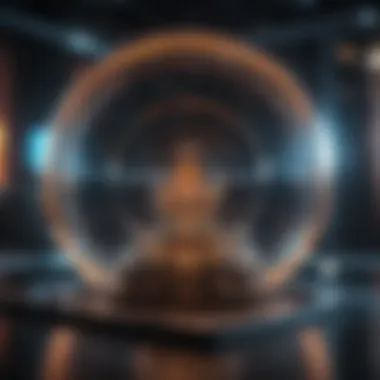

Holography stands at the crossroads of art and technology, infusing the entertainment sector with unprecedented capabilities. From enhancing the immersion of gaming to transforming live events into sensory extravaganzas, the applications of holography in entertainment are steadily gaining traction. This section scrutinizes two main avenues where holographic technology is making waves: gaming experiences and live performances.
Revolutionizing Gaming Experiences
The gaming industry has always been on the lookout for innovative ways to draw players deeper into virtual worlds. Holographic technology acts like a magician's wand, conjuring immersive experiences that were once deemed the realm of science fiction. By offering a three-dimensional interface, games can now present intricate environments where players can interact with their surroundings in a more significant manner.
One noteworthy example is HoloLens, developed by Microsoft. The device allows users to project holograms into the real world, blending gaming with physical interactions. Imagine playing a game where you can train a virtual dragon that perceives your movements. Instead of merely gazing at a screen, the players step into the game, becoming part of the action.
Here are some benefits of using holography in gaming:
- Enhanced Interactivity: Unlike traditional outputs, holograms allow for a multi-layered interaction where players can engage physically with characters and objects.
- Realistic Environment Simulation: Holographic displays create a believable atmosphere, enabling players to visualize and experience dynamic settings as they explore new worlds.
- Social Connectivity: Multiplayer holographic games can create a more spatial awareness, allowing players to engage each other in real time, regardless of actual distance.
In summary, the role of holography in gaming isn’t just about graphics; it’s about redefining how stories are told and experienced.
Immersive Experiences in Live Events
Performances and concerts have taken a sharp turn into the avant-garde with the addition of holography, crafting immersive experiences that resonate on a different level. Musicians and performers can now project holographic representations of themselves—or even previously recorded legends—enhancing performances like never before.
An illustrative case is the late Tupac Shakur's hologram performance at Coachella in 2012. The hologram brought the iconic rapper back to life, celebrating his legacy in a way that was both respectful and thought-provoking. Gigs have transcended mere musical recitals and evolved into complete audiovisual spectacles where sound blends seamlessly with sight.
Some considerations for utilizing holography at live events include:
- Production Costs: While the wow factor is significant, producing high-quality holograms often involves considerable investment in technology and skilled labor.
- Audience Accessibility: Not everyone is familiar with holographic displays, which could potentially divide audience enjoyment based on tech-savvy.
- Integration Challenges: Merging live performance with holographic presentations can be technically demanding. Proper synchronization is key to deliver a seamless audience experience.
"Holography in entertainment is not merely an add-on; it reshapes the very fabric of interaction, creating memories that linger long after the lights dim."
Through this exploration, it's evident that the sphere of entertainment is poised on the brink of a transformative journey, guided increasingly by the principles of holography.
Holo Applications in Industry
The evolution of holographic technology has ushered in a new era within various industry sectors. It’s not merely an abstract concept confined to laboratories but a practical tool transforming operations, particularly in manufacturing and design processes. The significance of holo applications in industry lies in their ability to enhance efficiency, reduce errors, and foster innovation. They are redefining what is possible in terms of product design and manufacturing, offering companies the competitive edge they've been seeking in this fast-evolving marketplace.
Streamlining Manufacturing Processes
In today's fast-paced world, manufacturing isn’t just about assembly lines and heavy machinery anymore. Implementing holo applications has become crucial in streamlining processes. Through the use of holographic imaging, industries can visualize products at various stages of their development. For instance, instead of relying solely on traditional two-dimensional blueprints, engineers can now project three-dimensional holograms that allow them to interact with the design in real time. This not only increases the understanding of how a product will function but also allows for immediate adjustments.
Some benefits of using holography in manufacturing include:
- Enhanced Visualization: Workers can see a virtual representation of the product that they are working on, which leads to better planning and fewer misunderstandings.
- Early Problem Detection: Spotting inconsistencies and errors becomes more efficient when teams can manipulate the model in a holographic format during the early development stages.
- Reduced Time and Cost: By optimizing the design process and minimizing material wastage, businesses stand to save significantly in both finances and time.
“Holography helps transform ideas into tangible products—allowing innovation to leap off the paper.”
Industry pioneers like Ford have started adopting these technologies in their vehicle design processes, causing a ripple effect across the sector. Manufacturing isn't limited to just standard designs anymore; it can be highly customized based on precise specifications a client needs.
Holography in Product Design and Prototyping
The journey from concept to tangible products involves several steps, and this is where holography shows its prowess. Traditional prototyping can be time-consuming and costly, often requiring multiple iterations before arriving at a final design. That’s where holo applications accelerate the entire process.
Imagine a scenario where designers can produce a holographic prototype instantly and interact with it. They can rotate, zoom, and modify aspects on the fly—ways to envision how different materials might affect the final product. This level of detail wasn't possible with simple 2D models or even 3D printed prototypes, which may still take a considerable amount of time to create.
Some key aspects of utilizing holography in product design include:
- Rapid Prototyping: Designers can quickly adapt their prototypes based on real-time feedback.
- Collaborative Workspaces: Multiple team members can view and interact with the holographic model from various locations, thus promoting innovation through collaboration.
- User Testing: Engaging potential customers with a holographic prototype aids in gathering valuable insights before the product hits the market.
In an increasingly complex industrial landscape, utilizing holo applications could seem like deciphering a foreign language to many. However, companies that choose to invest in this technology will likely find the advantages well worth the effort. The ability to innovate efficiently while understanding and anticipating market needs can set a company apart in a competitive landscape.
As industries continue to embrace holographic technology, the future of manufacturing and product design appears bright, with endless possibilities to explore.
Innovations in Holography
Holography has come a long way since its inception, and the recent innovations in this field are nothing short of remarkable. The ability to create three-dimensional images through the interference of light beams has spurred a range of applications that were previously unimaginable. This section explores not only the breakthroughs that characterize recent developments but also the implications of these advancements for various industries and fields of study.
Recent Breakthroughs in Holographic Technology
The field of holography is in a state of dynamic growth, and recent breakthroughs have significantly enhanced its applicability. One notable advancement is the development of lightweight, cost-effective holographic materials. These new materials allow for faster production of holograms, making it easier for industries to adopt this technology. Industries, from entertainment to security, are leveraging these innovations to create striking visuals and advanced security features.
Moreover, improvements in digital holography have opened new avenues for research. Scientists are now able to use computational techniques to create holograms that can be manipulated digitally. This makes it possible to visualize complex structures in real-time, which is particularly useful in fields like biology and materials science.
"The next phase of holography could lead us toward tools that change how we perceive reality itself."
Additionally, the incorporation of artificial intelligence into holography seems poised to transform this technology further. AI algorithms can enhance the quality of holographic images, enabling clearer and more precise representations. This has a profound impact on industries requiring high-resolution imagery, like medical imaging and manufacturing.
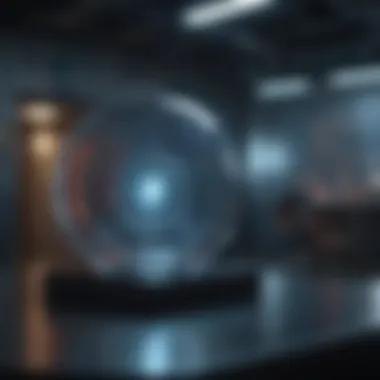
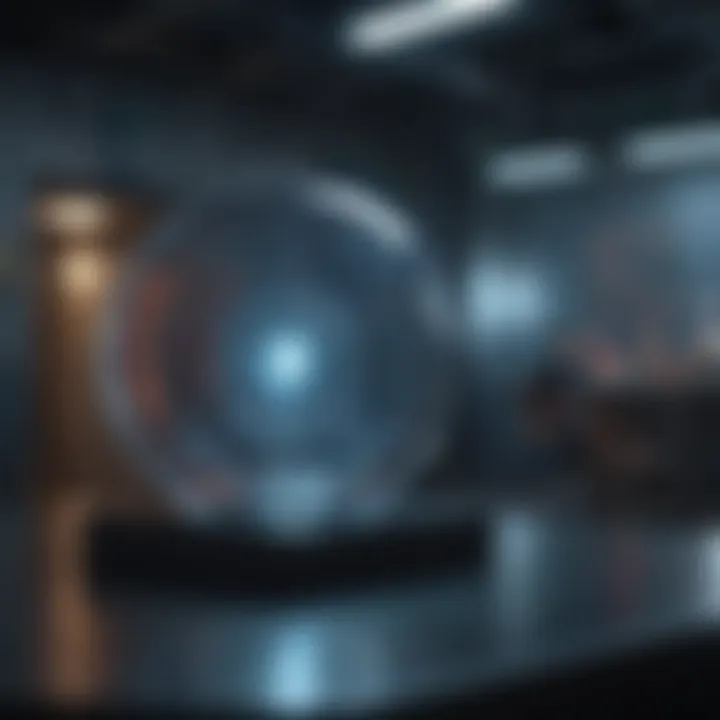
Future Directions in Holo Application Research
Looking forward, the potential for holography continues to grow as researchers probe deeper into new applications. One area of keen interest is the marriage of holography and virtual reality. As technology evolves, we may see immersive experiences that combine these two fields, allowing users to interact with 3D holograms in ways that enhance their learning and entertainment experiences.
Furthermore, researchers are exploring applications in telecommunications. The possibility of holographic communication could revolutionize how we connect. Imagine attending a meeting with your colleagues present as life-like holograms in your own living room—I mean, that’s the kind of disruption we're talking about!
Additionally, self-paced learning through holography is another avenue attracting attention. Educators are keen on creating lessons where students can view complex concepts, like cellular structures or architectural designs, laid out in three dimensions, making learning more engaging.
Also, there’s an increasing focus on ethical implications and the societal impact of holographic technologies. Navigating this landscape thoughtfully will be key to ensuring that these innovations benefit all while minimizing potential misuse.
As we stride into the future, the symbiosis of creativity and technology in holography holds the promise of not just aiding current industries but reshaping how we visualize and interact with our world.
Challenges and Limitations of Holo Applications
Holographic technology, while offering revolutionary possibilities across numerous fields, also comes with its share of challenges and limitations. Understanding these obstacles is crucial for anyone involved in the pursuit of holographic innovations, be it researchers, educators, or industry professionals. By grappling with these challenges, the community can move toward more effective solutions, ensuring that holography can achieve its full potential in modern applications.
Technical Obstacles
Delving into the technical aspects, one finds various hurdles that hinder the widespread adoption of holographic applications. First off, cost remains a significant barrier. High-quality holographic systems can come with a hefty price tag, making them less accessible for smaller organizations or startups. For instance, while some high-tech companies might easily afford advanced holographic displays or imaging systems, smaller educational institutions or research labs may struggle to finance such equipment.
Another issue lies in resolution limitations. Depending on the system used, photonic resolution can vary greatly. Achieving vivid, detailed holograms often requires specialized hardware and setup, which can add layers of complexity. Moreover, real-time holographic imaging remains a dream for many. The processing power needed to create and render high-fidelity holograms on-the-fly surpasses the capabilities of most existing consumer technology.
Furthermore, there are environmental factors to consider. Holography often relies on optimal conditions to produce reliable images. Factors like ambient light, temperature, and even the physical characteristics of the space can impact the quality of holographic projections. This limitation can be particularly challenging in dynamic settings like manufacturing plants or surgery rooms, where conditions can shift rapidly.
In sum, while the technical hurdles of holography are not insurmountable, addressing them demands a concerted effort by engineers and scientists alike. Achieving breakthroughs in areas such as cost-efficiency, resolution enhancement, and environmental adaptability is essential for pushing the boundaries of what holographic applications can accomplish.
Ethical Considerations in Holography
Turning our focus to ethical concerns surrounding holographic applications, it is imperative to navigate this terrain carefully. One of the main ethical dilemmas stems from the potential misuse of holographic technology. As holography becomes more accessible and sophisticated, its applications can span from benign educational tools to manipulative or harmful uses. For instance, in the wrong hands, holograms could potentially engage in creating misleading information or even deepfakes. The consequences of such misuse can ripple across societies, leading to distrust and misinformation.
Moreover, privacy issues must be considered in the context of holographic imaging. In domains such as surveillance or biometric data collection, the ability to project and analyze holograms raises questions about who holds the rights to such information. With systems that could identify individuals through holographic data, the risk of breaching individual privacy becomes a pressing concern.
There are also questions about access and equity in using holographic applications. As technology evolves, will it be reserved for those with the means to afford it, or will efforts be made to ensure it serves a broader demographic? Ideally, holographic advancements should benefit a wide range of users, including marginalized communities who may lack resources.
Case Studies of Holo Applications
In the wide world of holographic technology, case studies serve as invaluable windows into its real-world applications. They offer a hands-on glimpse into how holography is being applied to solve problems, enhance experiences, or even create entirely new products. This section zeroes in on two key aspects: successful implementations across various sectors and the insights gained from trials of holographic applications.
Successful Implementations in Various Fields
Holography is more than just a conceptual framework; it has manifested in various sectors with considerable success. Let's take a closer look at some notable implementations:
- Healthcare: One of the most compelling examples is in medical imaging. Holography is being utilized to create three-dimensional representations of organs and tissues, allowing for better visualization and interpretation of complex anatomical structures. Hospitals employing such technology often report improvements in diagnostic accuracy.
- Education: In the realm of education, institutions like the University of Illinois showcased holographic projectors to create interactive learning environments. History classes utilize holograms to bring historical figures to life, allowing students to engage with content in ways that books simply cannot offer.
- Manufacturing: Companies like Ford Motor Company have tested holographic projections in their design teams for vehicle prototypes. This allows designers to visualize designs in a 3D space before physical prototypes are built.
Holography has the potential to fundamentally revolutionize not just how information is presented, but also how collaborative processes are conducted across entire industries.
- Entertainment: Holographic performances, such as those by Tupac at Coachella and more recent holographic concerts, demonstrate how entertainment can be enhanced through technology, creating an unforgettable experience for audiences.
In each of these cases, the underlying theme is clear: holography is not a passing trend; it’s a transformative tool that makes information more accessible and comprehensible.
Lessons Learned from Holo Application Trials
As much as successful implementations shine brightly, pitfalls and lessons learned provide a more holistic understanding of the technology’s landscape. Below are some insights gathered from various trials:
- Scalability Challenges: Many projects face difficulties when scaling from small-scale tests to larger implementations. What works well in a controlled environment can become cumbersome when expanded.
- Technical Limitations: Initial excitement can sometimes overshadow the limitations of the current technology. For example, holographic displays often require specific environmental conditions for optimal viewing, which can pose hurdles in real-life applications.
- User Acceptance: The reception of holographic innovations can vary. Some users may find the technology to be difficult to engage with, limiting its effectiveness. Ensuring that systems are user-friendly is paramount.
- Cost Considerations: High-end holographic technologies often come with steep costs, which can deter smaller organizations from adopting them.
- Ethical Implications: Lastly, as holography enhances capabilities like video conferencing or virtual meetings, ethical concerns around privacy and security come into focus. Ensuring that holographic technology is employed responsibly is crucial.
By pulling lessons from each trial, developers and researchers can not only address existing flaws but also pave the way for more refined applications in the future, ensuring that holography becomes increasingly effective and widely used.
Epilogue and Future Perspectives
In concluding this exploration of holographic applications, it's vital to reflect on how this technology continues to reshape various fields. The insights gleaned from this article underscore the significance of holography not just as a scientific curiosity but as a transformative tool influencing industries, medicine, education, and more. With applications that extend from precise medical imaging to interactive learning environments, the benefits are manifold.
Summarizing Key Insights
Throughout this article, we have discussed the foundational principles of holography, its historical context, and how it manifests in modern applications. Here’s a summary of key insights:
- Interdisciplinary Nature: Holography transcends traditional boundaries, finding utility in different sectors such as medicine, education, and entertainment.
- Medical Advancements: The use of holographic imaging has revolutionized surgical procedures, offering enhanced visualization and potential for tailored patient treatments.
- Educational Improvements: Virtual classrooms that integrate holographic displays engage students in a more interactive manner, enhancing the learning experience.
- Industrial Efficiency: In manufacturing and product design, holography aids in creating prototypes and streamlining processes, thereby cutting costs and saving time.
- Ongoing Innovations: The rapid progression of technology means that new applications for holography are likely to emerge continually.
Vision for Holo Applications in the Coming Years
Looking ahead, the future of holographic applications appears both promising and intricate. Several considerations shape this vision:
- Technological Integration: As complementary technologies like augmented reality and artificial intelligence evolve, integrating these with holography could yield even more innovative applications.
- Accessibility and Affordability: There's an ongoing effort to make holographic technology accessible to a broader audience, potentially transforming how various sectors operate.
- Ethical Dimensions: As holography increases in capability, ethical discussions surrounding privacy, digital manipulation, and data security are likely to grow. Adapting frameworks to ensure responsible use will be crucial.
- Research and Development: Continuing to invest in R&D will be necessary. Fostering collaborative partnerships between academia and industry could accelerate breakthroughs in holographic technologies.
- Global Trends: Attention to global trends, such as sustainability and remote collaboration, may inform how holography is applied in the future, particularly in reducing the carbon footprint associated with travel and in promoting efficient remote working solutions.
In essence, as we draw this exploration to a close, it is clear that the potential for holographic applications stretches far and wide. The path forward will likely see exciting developments, underscoring the need for ongoing dialogue among researchers, practitioners, and ethicists alike.
"The future belongs to those who believe in the beauty of their dreams."
As holography progresses, so will our collective understanding of its implications, challenges, and possibilities.



